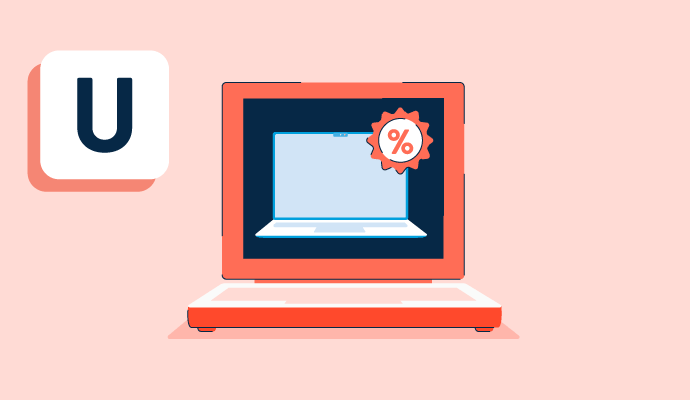What are upsell opportunities?
Upsell opportunities, also known as upselling, are sales strategies that companies use to push a higher version of a product or service than what a prospective customer originally intended to buy. Upselling boosts revenue and allows the customer to use a product or service that has more features and functionality.
Most businesses offer various tiers of a single product or service that has significantly higher features or functionality than the standard version. Identifying the customer’s need and pushing a better version of the product or service is known as upselling, or identifying an upsell opportunity.
For example, when a customer decides to purchase the standard version of an office suite, but the salesperson feels their pain points can be better addressed with a premium version, they will attempt to upsell the product. If the customer chooses the premium version over the standard, it provides better value for them and for the company since the sale will generate more revenue.
While a salesperson is responsible for identifying upsell opportunities in smaller companies, in larger enterprises, teams such as marketing, or marketing operations are responsible for the same.
Upsell opportunities exist in any business that offers a multi-tiered product or service sales strategy. These companies typically use customer success software to understand more about the customer, their satisfaction, how they use a product or service, and to identify whether they require more out of their current solution.
Here are some examples where upsell opportunities are used:
- Phone plans
- Software solutions
- Hotels
- Streaming services
- Computers and mobile devices
- Insurance plans
Basic steps to identify upsell opportunities
Spotting upsell opportunities isn't hard. There are many instances the sales and marketing teams encounter on a daily basis. A few steps to identify upsell opportunities with ease are as follows:
- Based on journeys: Monitoring customer journeys helps understand their preferences, interests, behavior, and what they wish to achieve with the product. Understanding these factors can help teams upsell solutions to the customer.
- Single view: Customers can engage with a product or service through multiple touchpoints. It's hard to keep track of all touchpoints on a daily basis. It's easier to keep a track of customers' touchpoints through a unified view of the customer.
- Segmentation: Mining behavioral data to track customer information such as purchase history, application usage, product concerns, and more can help the sales and marketing teams understand them better. In turn, this helps them better upsell a solution to the customer.
How does upselling work?
Once a prospect signs the dotted line and becomes a paying customer, they are entitled to use the product or service. However, as time goes on, they may require more functionality or features to work with. Identifying this upsell opportunity is up to either a salesperson (in smaller companies) or dedicated teams such as marketing or marketing operations (in larger companies) who can then show the customer what an expanded version of the product looks like, how it works, and its benefits.
Applications of upsell opportunities
Upsell opportunities should present better value propositions for the customer. Companies often upsell with an attractive offer if the customer opts for it sooner rather than later. Waiting to purchase an enhanced version of a product or service can prove to be more expensive.
Upselling and upsell opportunities are used by the following industries:
- SaaS solutions: The software-as-a-service (SaaS) industry uses upsell opportunities to sell higher versions of a software plan. Most SaaS solutions have different tiers, with higher plans that offer more user access, additional features, or even priority customer support.
- Insurance: Insurance plans almost always have various options. Agents identify and offer add-ons to ensure significantly better coverage for their customers.
- Streaming services: Most streaming services have different plans. These plans offer additional benefits, such as better resolution, more users allowed to watch at the same time, and ad-free programming.
- Computers and mobile devices: The base version of modern computers and mobile devices don’t offer a lot of extra value. Upgraded versions of these devices offer higher performance, increased storage capacity, or enhanced camera quality.
- Hotels: Hotel managers aim to upsell guests on upgraded rooms with more space and amenities for a better experience.
Benefits of upselling
There are multiple benefits associated with identifying and implementing upsell opportunities. Below are some of the most common benefits:
- Increased revenue. Upselling helps increase revenue from existing customers, rather than acquiring new ones.
- Retention opportunities. Companies that offer multiple products or services can upsell them to customers who are already using a particular product. This provides them more opportunities to retain the customer.
- Advantageous both ways. Upselling a higher solution is beneficial to the salesperson because it helps them bring in more sales. On the other hand, customers also benefit from upgrading to a better version of the solution.
Components of upselling
There are a few components involved in upselling that help make it more effective. Here are some of them:
- Promise: Upselling doesn’t stop when a customer signs the dotted line. Companies need to ensure they deliver the value promised during the upsell.
- Communication: Communication is key when it comes to upselling. Salespeople must make the client aware of the values and benefits a higher plan will bring.
- Relationship: Building customer relationships and nurturing existing ones is a key part of what makes upselling work.
- Trust: Customers need to trust a product or service before purchasing, and even more so when they are asked to spend more to upgrade their existing solution. Companies should allow free trials or money-back guarantees so the customer can try the product or service before they purchase. In most cases, customers are likely to convert when they establish this kind of trust.
Upsell opportunities best practices
Upselling is a simple process to understand and implement. However, companies need to remember the following best practices:
- Relevancy: Companies shouldn’t push a solution that doesn’t provide value for the customer. For example, if a customer is looking to purchase a motorcycle, it doesn’t make sense to sell them a car. Instead, the dealership should analyze the various motorcycles available and upsell one with more features.
- Value: Most customers do not agree to an upsell immediately. Companies need to nurture them the right way and allow the customer to fully realize the value and benefits of upgrading their product.
- Discounts: Companies can offer discounts to customers for upgrading their product or service. This provides more incentive for the customer to purchase additional features and capabilities at a lower price.
- Need: It’s important to study and understand the customer’s needs before upselling. For example, if the customer is currently using a standard version of a customer relationship management (CRM) solution, but they require more automation features that are not available in the current plan, the team responsible needs to identify this and proactively reach out.
- Relationships: Upselling is successful when there is a mutual trust between the company and the customer. A salesperson cannot take a forceful approach when they propose a solution with higher value. Building a relationship with the customer is a good upselling technique. For example, if an existing SaaS customer is in need of a solution with higher capabilities, the salesperson would already be aware of this. The salesperson can then go on to slowly nurture the account and build a solid relationship before upselling the next version of their product.
Upsell vs. cross-sell
Upselling opportunities are generally mistaken with cross-selling, which is an entirely different concept. While upselling means that a company encourages existing customers to upgrade the same product or service, cross-selling means that a customer is offered to buy an entirely different product or service at the time of purchase. For example, if a customer purchases a smartphone, a salesperson might try to cross-sell a protective case or phone insurance.

Adithya Siva
Adithya Siva is a Content Marketing Specialist at G2.com. Although an engineer by education, he always wanted to explore writing as a career option and has over three years of experience writing content for SaaS companies.




















